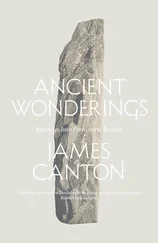Eric Chevillard - Prehistoric Times
Здесь есть возможность читать онлайн «Eric Chevillard - Prehistoric Times» весь текст электронной книги совершенно бесплатно (целиком полную версию без сокращений). В некоторых случаях можно слушать аудио, скачать через торрент в формате fb2 и присутствует краткое содержание. Год выпуска: 2012, Издательство: Archipelago Books, Жанр: Современная проза, на английском языке. Описание произведения, (предисловие) а так же отзывы посетителей доступны на портале библиотеки ЛибКат.
- Название:Prehistoric Times
- Автор:
- Издательство:Archipelago Books
- Жанр:
- Год:2012
- ISBN:нет данных
- Рейтинг книги:5 / 5. Голосов: 1
-
Избранное:Добавить в избранное
- Отзывы:
-
Ваша оценка:
- 100
- 1
- 2
- 3
- 4
- 5
Prehistoric Times: краткое содержание, описание и аннотация
Предлагаем к чтению аннотацию, описание, краткое содержание или предисловие (зависит от того, что написал сам автор книги «Prehistoric Times»). Если вы не нашли необходимую информацию о книге — напишите в комментариях, мы постараемся отыскать её.
Prehistoric Times — читать онлайн бесплатно полную книгу (весь текст) целиком
Ниже представлен текст книги, разбитый по страницам. Система сохранения места последней прочитанной страницы, позволяет с удобством читать онлайн бесплатно книгу «Prehistoric Times», без необходимости каждый раз заново искать на чём Вы остановились. Поставьте закладку, и сможете в любой момент перейти на страницу, на которой закончили чтение.
Интервал:
Закладка:
Some by the hundreds find refuge in the painted caves, our oldest sanctuaries. I deplore the fact that the builders of churches and cathedrals, following the orders of religious authorities blinded by vanity or prompted by their will to power, propelled these aerospace edifices skyward: the higher and pointier they are, the farther they rise from the ground, the more solemn the homage to the Creator, whereas to truly give thanks to Him, it would seem more appropriate to withdraw into the very heart of His creation, to get as close as possible to the earth’s central core, that flawless original diamond that was gradually covered in sediment, tainted, carbonized, buried beneath the mud and petroleum produced by decomposition, all the strata of lies, of dissembling, granite slabs, leaden weights, funerary marbles, rough barks, old crusts, all the way up to this greensward, these fatuous flowerets. Prehistoric artists worked in this direction, toward the depths, their frescoes extol a dynamic world dominated by the powerful and resolute figures of mammoths and bison, where man, beset by instincts as vague and fickle as his desires, remains in the background, his true place in the territory, that of the most ill-favored creature ever in all his nakedness of a beast flayed alive, his skin as sensitive as the water’s surface and his hunger perpetual. The prehistoric artist revered these splendid, sturdy animals; they had no weaknesses, no uncertainty; their senses warned them about the future, they fled winter before the first chill, whereas man awoke one morning shivering, every season took him by surprise, disoriented even when he stayed in the same place, day in day out. Perhaps the first hunting rites performed in these caves in fact evolved not, as I say rather rashly a little further down, from a belief in their magical powers, but from a more or less conscious need to punctuate that laboriously begun, unsettled existence that had no temporal supports or reference points in comparison to the calm self-confidence of animals that simply had to live their lives in order to fulfill their destiny. Time passed without giving any purchase to men. Rituals had to be created in order to control it to some extent so that man could orient himself, gain a foothold at last in a world that was very poorly organized, governed solely by the laws of nature, and in which intelligence was, in short, the too obvious trait of easy prey.
The paintings, often admirably preserved, fossilized by flows of calcareous water, sometimes even protected by a sheet of thin, translucent calcite, are the only irrefutable traces that remain of these rituals and ceremonies, but the deep footprints allow us to imagine there had been dancing as well, and because there was dancing, in all likelihood there was singing; music secured its power, as it does today, through hypnosis and hysteria. I cannot be sure of course, but a certain form of oral literature may have existed, its legendary characters being precisely those reproduced by the painters, an entire animal mythology forged by tales of hunting and combat. This would explain the countless, almost identical depictions in several caves nowhere near each other: those depictions were there only to serve as illustrations for the story that a storyteller, or the painter himself, told aloud for an audience that never tired of hearing it. These paintings, then, really only produced an effect as they were being executed, carried along by the story for as long as it lasted; then they were no longer of interest and the painter had to start on another, the same one, as soon as the storyteller again took up his immutable tale from the beginning. The paintings traveled through the ages, intact, whereas the tales that justified them and gave them meaning have been lost. The paintings live on quite well without them, poignant poetic enigmas, incomplete and perfect, and henceforth they precede every conceivable narrative.
(I know how to show off my erudition when the occasion calls for it, and this is a good opportunity. If I want to slip in my little anecdote, it’s now or never. You may have noticed that nothing is as hard to slip in as an anecdote. Among the forms of commerce that tie men to one another, the exchange of anecdotes is by far the one that works the least well of all. In this business, each person acts exactly as if he had two mouths and one ear. The goal is to prevent the other person from getting to the end of his anecdote, either by taking advantage of a moment of silence or by rudely cutting him off in order to slip in one’s own anecdote, despite the meager interest it arouses in the adversary who is concerned, above all, with getting on with his; and we call this savage and pitiless bickering “conversation,” and it seems the two are still good friends when they part. Nonetheless, since I now have the opportunity to slip in my little anecdote without the constant risk of interruption that often forces us to abridge our anecdotes, or to summarize them in order to spare the listener the minor details when he could just as easily have done without the salient points, having himself on the subject a much better story that he’s just dying to tell, I would be wrong to deprive myself of it. First allow me to state — and this preamble should be repeated word for word as my conclusion — that as unbelievable as it may seem, I swear my little anecdote is true: the Spanish Jesuits were for a short time suspected of having painted the Altamira cave paintings themselves in order to prove that all art described as Paleolithic was nothing but fraud and hoax. The scientific dating of the paintings nipped this notion in the bud, but it was nonetheless based on a reasonable assessment of Jesuitic malice and was suggested, indirectly, by the tumultuous religious feeling that overcame the first visitors to the cave. Will our museums — those great cathedrals of silence, respect, and boredom in which we no longer await anything but God — one day produce the same effect?)
Unless we find humanity’s memory preserved in some cavernous fold of space-time — which cannot be excluded — and if the show we are putting on is being transmitted at this very moment to our distant descendants, well then, my clairvoyance is rooting them to their spot — so unless everything is recorded, the meaning of these ceremonies will remain unknown. We always penetrate these sumptuously painted sanctuaries with the vague discomfort one feels in religious sites devoted to foreign divinities of whose rules and regulations we are ignorant: should we keep on our hat and take off our shoes, or the opposite, or keep on all three, or take them all off, and in what order? We are terrified of committing a sacrilege and have the shameful sense of being there as tourists, with no other motive than to satisfy our curiosity, which is ferreting about everywhere — a rat-chasing dog would be better behaved — and we idiotically lift our heads every time the faithful bow theirs. This is the true reason, the only reason, I am reluctant to take up my duties in the cave: I don’t believe I have the right to violate this sanctuary. What are they asking of me! It would be an insult to the faith of our ancestors. Who are we to declare null and void or abstruse the Great Spirit on whom they called as they were perhaps slitting their sons’ throats and banging their heads against the rock? Let’s not forget that they were not as far removed as we are from the origins of the world and that in all likelihood they had available to them reliable, easily verifiable information on the subject that we are lacking today.
WE KNOW how it happens: some children are playing hide-and-seek in the undergrowth, the most quick-witted one slips behind some fallen rocks; then, as his pursuers draw near, he goes deeper and deeper between the blocks of stone; before long he is forced to bow his head, curl his spine, fall onto all fours, but the route is clearly not designed for mammals. He advances by crawling into this narrow tunnel and suddenly, forgetting the game, he lets out a cry of surprise that echoes for ages, his child’s voice reverberating triumphantly as if he will never run out of breath. His playmates come running and they in turn discover the tunnel’s entrance and are swallowed up by it, heads bowed, backs rounded, on elbows and knees, on bellies, they undergo the same metamorphoses, they crawl up to him and their clamor, filled with wonder, is echoed at a deeper pitch by the invisible choirs of the cave; this is, in fact, how things happen, or else a hunter — a long, shiny rifle carrying a nasty little man over its shoulder — this hunter suddenly sees his dog disappear, suddenly he no longer sees his dog, the ground has opened beneath his dog, the earth has absorbed his damp dog, what has happened to his dog, did he ever really have a dog, did he dream up his dog, his old companion of a dog was ultimately but one more illusion, suddenly annihilated, the lovely dream vanished, how good it would be, how convenient for hunting to have a dog, yes, he should have a dog, he must get a dog, but then he hears moaning, a plaintive yelp very close by, his dog is lying at the bottom of a pit obscured by ferns, his good, indisputable old canine belonging to a nasty, cynical little man is there, at the bottom of this pit into which the man heavily descends, grabbing at roots, bothered by his rifle now pointing at him and slapping him with its butt since it is not loaded; at last he manages to reach the animal and sees that the shaft continues in a slight incline and leads to a larger cavity. This is, in fact, how things come to pass, unless the day’s hero happens to be an innocent hiker, himself fallen to the bottom of the pit, perhaps even a gamekeeper, or a lumberjack, a sap or mushroom collector, whatever. This is how things happened and the Pales cave was discovered some sixty years ago.
Читать дальшеИнтервал:
Закладка:
Похожие книги на «Prehistoric Times»
Представляем Вашему вниманию похожие книги на «Prehistoric Times» списком для выбора. Мы отобрали схожую по названию и смыслу литературу в надежде предоставить читателям больше вариантов отыскать новые, интересные, ещё непрочитанные произведения.
Обсуждение, отзывы о книге «Prehistoric Times» и просто собственные мнения читателей. Оставьте ваши комментарии, напишите, что Вы думаете о произведении, его смысле или главных героях. Укажите что конкретно понравилось, а что нет, и почему Вы так считаете.












